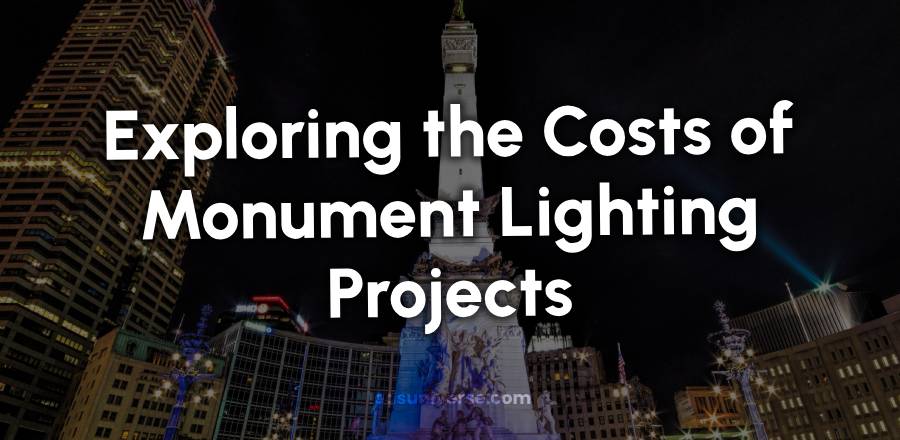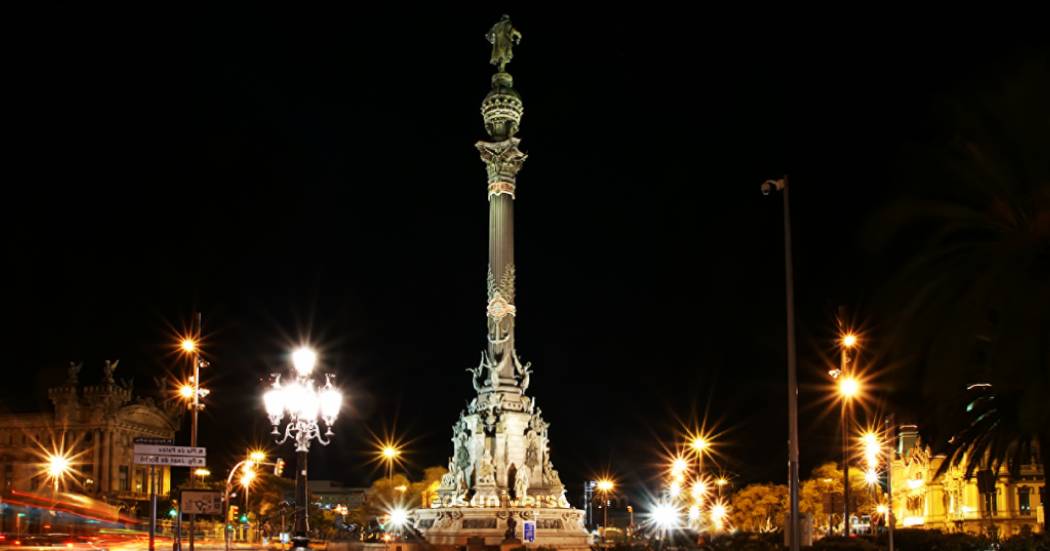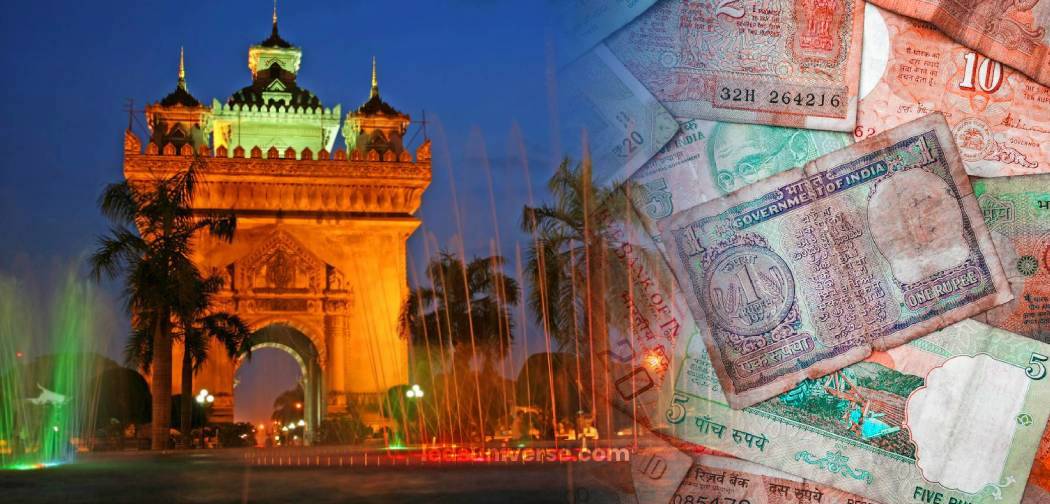
Monument lighting not only enhances the structure’s aesthetic appeal but also fosters community pride and cultural awareness. However, beneath this enchanting illumination lies a complex array of expenses, from installation and energy costs to ongoing maintenance.
Illuminating monuments serves a dual purpose: it enhances the beauty and visibility of historical structures while also contributing to community identity and tourism. However, the implementation of such lighting systems involves various expenses that require meticulous planning and management.
Reach out for free lighting consultation
Table of Contents
ToggleUnderstanding the various components that contribute to monument lighting expenses is fundamental for effective budget management.
| Cost Component | Details | Cost Range |
|---|---|---|
| Installation Costs | Includes purchase of fixtures, wiring, poles, and hardware. Labor costs vary based on project complexity. | $5,000 – $20,000 (total installation) |
| Fixture Costs | Lighting fixtures vary by quality and design. | $200 – $1,000 per fixture |
| Labor Costs | Simple installations: $50 – $100 per hour. Complex installations (specialized electrical work) increase costs. | $50 – $100 per hour |
| Running Costs | Energy consumption primarily influenced by bulb type. Incandescent bulbs consume more electricity. | $60 – $300 per month |
| Incandescent Bulbs | Consume 60-100 watts per bulb, leading to higher energy bills. | Higher energy costs |
| LED Bulbs | Consume 8-15 watts per bulb, reducing energy use by up to 80%. Initial investment higher, but long-term savings. | $300 – $600 per fixture (initial) |
| Maintenance and Repairs | Regular cleaning, inspections, and bulb replacements. Older systems may require more repairs. | $100 – $300 (maintenance check) |
| Repairs | Rewiring or replacing faulty components. | $500 – $2,000 |

Installation costs represent the initial financial outlay required to set up the monument lighting system. These expenses include the purchase of lighting fixtures, wiring, poles, mounting equipment, and other necessary hardware. The cost of the fixtures can vary widely, ranging from $200 to $1,000 per unit depending on their quality and design.
Moreover, labor costs for the installation process can differ based on the complexity of the project. For instance, simple installations may cost around $50 to $100 per hour for labor, but if specialized electrical work or underground wiring is needed, this can push the total installation cost higher. In some cases, the involvement of skilled professionals is necessary to ensure that the system is installed correctly and safely. This added level of expertise, though vital for a long-lasting system, also increases the overall expense.
On average, the total installation costs can range from $5,000 to $20,000, depending on the monument’s size and the intricacy of the lighting system.
Running costs, primarily driven by energy consumption, form a significant portion of ongoing expenses. The type of bulbs selected has a direct influence on energy bills. Traditional incandescent bulbs are less energy-efficient, consuming between 60 to 100 watts per bulb. As a result, using these bulbs can lead to higher monthly utility costs. In contrast, LED bulbs, which use just 8 to 15 watts to produce the same level of brightness, can reduce energy consumption by up to 80%.
Although the initial cost of LED fixtures is higher—ranging from $300 to $600 per fixture—the long-term energy savings make them a much more economical choice over time. For example, a large-scale lighting setup that costs $300 per month in electricity with incandescent bulbs might only cost $60 to $80 per month when using LEDs.
Therefore, while the upfront investment is greater with energy-efficient lighting, the significant reduction in running costs can lead to savings of hundreds or even thousands of dollars annually, depending on the size and scope of the lighting project.
This involves tasks such as cleaning the fixtures, inspecting wiring, and replacing bulbs when necessary. For a basic maintenance check, costs typically range between $100 and $300, depending on the number of lights and the complexity of the system.
Over time, repairs may also become necessary, especially in older systems where wiring or hardware might degrade. For example, rewiring or replacing faulty components can cost between $500 and $2,000 depending on the extent of the damage.
Proactively budgeting for these unexpected repairs is vital to sustaining the effectiveness of the lighting setup. Additionally, LED systems tend to reduce the frequency of bulb replacements, further cutting down on long-term maintenance costs.
While planning for monument lighting expenses, hidden costs may arise that can catch project managers off guard.
Installation often requires permits, especially for public monuments. These permits can incur fees, and inspections may be necessary to ensure compliance with local regulations. Such expenses can add up and should be factored into the overall budget.

Sometimes, additional infrastructure may be needed to support the lighting installation, such as poles for fixtures or enhanced electrical systems. These hidden costs can escalate quickly if not anticipated during the planning phase.
A realistic financial plan should be created that accounts for both initial installation costs and ongoing maintenance. It is beneficial to consider potential fluctuations in energy prices and the impact they may have on future expenses. Allocating specific funds for regular upkeep will ensure that the lighting system remains operational and visually striking throughout the year.
Cost-saving strategies can also be incorporated into the budgeting process. Investing in energy-efficient technologies, such as LED bulbs, can lead to considerable savings over time. Furthermore, exploring partnerships with sponsors or local government agencies can provide additional funding sources for the project. Collaborations with businesses that seek to enhance their community engagement can alleviate some of the financial burdens.
Revenue generated through tourism can significantly offset monument lighting expenses. Well-lit monuments attract visitors, and increased foot traffic can lead to higher revenue for local businesses and the municipality. Establishing night tours or special events that capitalize on the illuminated monuments can create an additional income stream. Marketing efforts focused on promoting the unique lighting features can also help draw in tourists.
It is also prudent to consider potential grants and funding opportunities that may be available from local or national heritage organizations. Many municipalities have programs aimed at preserving and promoting cultural heritage, which may include funding for monument lighting projects. Researching and applying for these grants can supplement the budget and enable more ambitious lighting designs.
Monument lighting expenses encompass a range of factors, from installation and energy costs to maintenance and upgrades. Understanding these components enables more effective budgeting and resource allocation. By considering both immediate and long-term financial impacts, municipalities and organizations can ensure that monument lighting not only enhances visual appeal but also remains financially sustainable. Through a combination of innovative technologies, strategic partnerships, and environmentally friendly practices, the beauty of illuminated monuments can be preserved for future generations to appreciate.